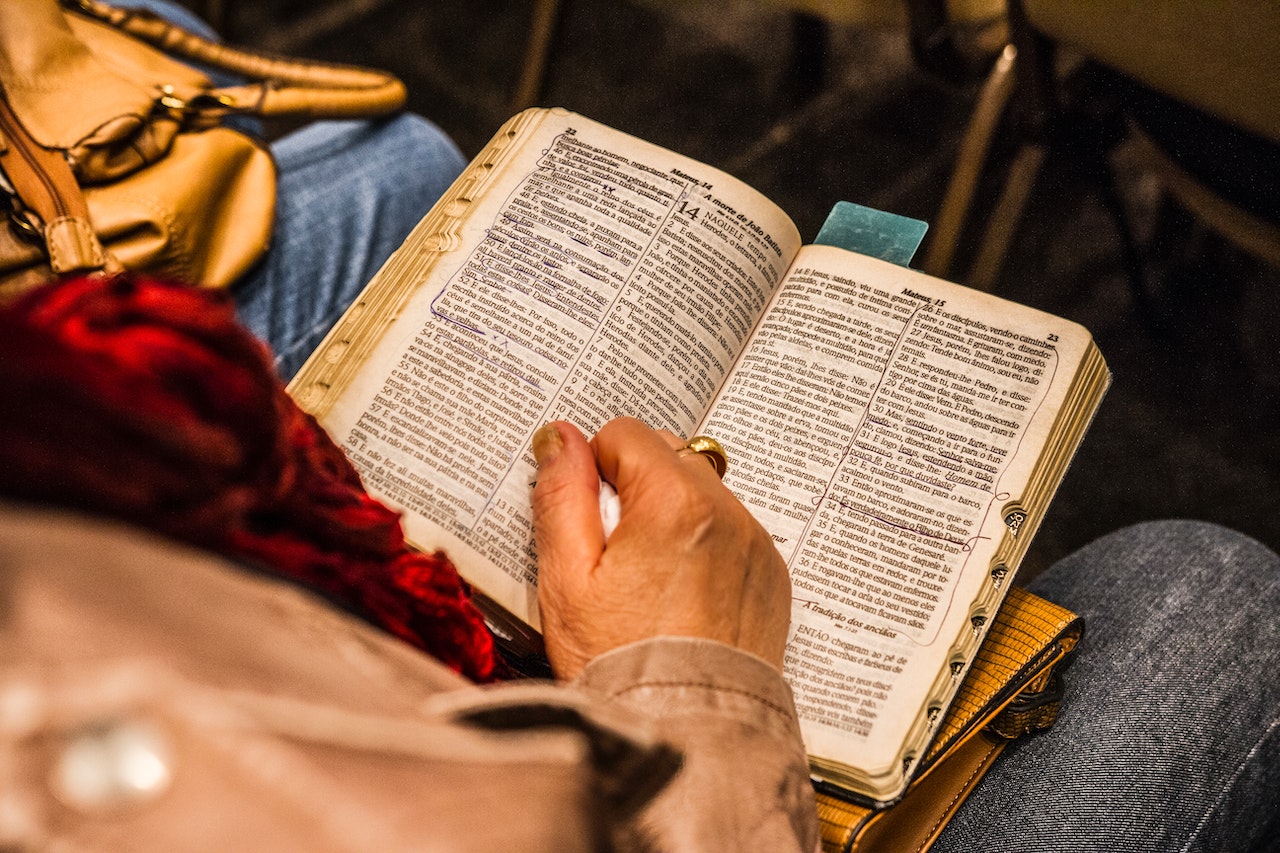Christians have varying beliefs and opinions on the use of Palo Santo, a type of wood that is often burned for its aromatic properties and spiritual significance. Some Christians may see it as a harmless practice, while others may view it as incompatible with their faith. Ultimately, the decision to use Palo Santo as a Christian is a personal one that should be made with careful consideration and prayer.
Table of Contents
Benefits of Using Palo Santo for Christians
Palo Santo, also known as “holy wood,” has been used for centuries by indigenous cultures in South America for its spiritual and healing properties. But can Christians use Palo Santo? Some Christians may be hesitant to use Palo Santo due to its association with non-Christian spiritual practices. However, many Christians have found that Palo Santo can actually enhance their spiritual practices and deepen their connection to God.
One of the main benefits of using Palo Santo for Christians is its ability to cleanse and purify a space. Just as Christians use prayer and holy water to cleanse their homes and churches, Palo Santo can be used to clear negative energy and invite in positive energy. By burning Palo Santo and allowing the smoke to waft through a space, Christians can create a sacred atmosphere that is conducive to prayer, meditation, and worship.
In addition to cleansing a space, Palo Santo can also help Christians connect with God on a deeper level. The sweet, earthy scent of Palo Santo can help to calm the mind and body, making it easier to enter into a state of prayer or meditation. Many Christians find that burning Palo Santo before engaging in spiritual practices helps them to quiet their minds and focus their thoughts on God.
Furthermore, Palo Santo can be used as a tool for spiritual protection. Just as Christians may wear a cross or carry a rosary for protection, burning Palo Santo can create a shield of positive energy around an individual or space. By setting an intention for protection and burning Palo Santo with reverence and respect, Christians can create a barrier against negative influences and invite in the presence of God.
Some Christians may also find that Palo Santo can help them to release negative emotions and thoughts. Just as Christians are encouraged to confess their sins and seek forgiveness, burning Palo Santo can help to release pent-up emotions and clear away mental clutter. By allowing the smoke of Palo Santo to carry away negative energy, Christians can create space for healing and renewal in their hearts and minds.
Ultimately, the decision to use Palo Santo as a Christian is a personal one. Some Christians may feel uncomfortable using a tool that has roots in non-Christian spiritual practices, while others may find that Palo Santo enhances their spiritual journey. It is important for Christians to prayerfully consider their intentions and motivations when using Palo Santo, and to approach the practice with reverence and respect.
In conclusion, Christians can use Palo Santo as a tool for cleansing, protection, and spiritual connection. By approaching the practice with an open heart and a spirit of reverence, Christians can harness the healing properties of Palo Santo to deepen their relationship with God. Whether used in prayer, meditation, or worship, Palo Santo can be a valuable tool for Christians seeking to enhance their spiritual practices and draw closer to the divine.
How Palo Santo Aligns with Christian Beliefs
Palo Santo, a sacred wood from South America, has been used for centuries in spiritual rituals and ceremonies. Its sweet, woody aroma is believed to cleanse and purify spaces, ward off negative energy, and promote healing. But can Christians use Palo Santo in their spiritual practices? Some may wonder if using Palo Santo aligns with Christian beliefs.
For many Christians, the use of Palo Santo may raise questions about its origins and whether it conflicts with their faith. Palo Santo comes from the Bursera graveolens tree, which is native to South America. The wood is harvested sustainably, and its use in spiritual practices is deeply rooted in indigenous traditions. Some Christians may be hesitant to incorporate Palo Santo into their spiritual practices due to its association with non-Christian beliefs and practices.
However, it is important to remember that the use of Palo Santo is not inherently tied to any specific religion or belief system. Just as Christians may use incense or candles in their spiritual practices, Palo Santo can be used as a tool for prayer, meditation, and spiritual reflection. The key is to approach the use of Palo Santo with intention and reverence, focusing on its ability to cleanse and purify spaces rather than its cultural or spiritual origins.
In fact, some Christians may find that the use of Palo Santo enhances their spiritual practices and deepens their connection to God. The act of burning Palo Santo can be a form of prayer, a way to create a sacred space for worship and reflection. Its sweet aroma can help to center the mind and open the heart to the presence of the divine.
When using Palo Santo, Christians can incorporate it into their spiritual practices in a way that aligns with their faith. They can offer prayers of gratitude and thanksgiving as they light the wood, asking for God’s blessings and guidance. They can use Palo Santo to cleanse and purify their homes, creating a space that is conducive to prayer and worship. And they can use Palo Santo as a tool for meditation, allowing its aroma to calm the mind and focus the spirit.
Ultimately, the use of Palo Santo is a personal choice that each Christian must make for themselves. Some may find that it enhances their spiritual practices and deepens their connection to God, while others may prefer to stick to more traditional forms of worship. The key is to approach the use of Palo Santo with an open heart and a spirit of reverence, recognizing its ability to cleanse and purify spaces and create a sacred atmosphere for prayer and reflection.
In conclusion, Christians can use Palo Santo in their spiritual practices in a way that aligns with their faith. By approaching the use of Palo Santo with intention and reverence, Christians can create a sacred space for prayer, meditation, and worship. Its sweet aroma can help to center the mind and open the heart to the presence of the divine. Ultimately, the use of Palo Santo is a personal choice that each Christian must make for themselves, based on their own beliefs and spiritual practices.
The History of Palo Santo and its Connection to Christianity

Palo Santo, also known as “holy wood,” has been used for centuries by indigenous cultures in South America for its spiritual and healing properties. The wood comes from the Bursera graveolens tree, which is native to the region and is believed to have powerful cleansing and purifying properties. In recent years, Palo Santo has gained popularity in the Western world for its pleasant aroma and purported benefits for mental and emotional well-being.
Many Christians may wonder if it is appropriate to use Palo Santo, given its association with indigenous spiritual practices. Some may be concerned that using Palo Santo could conflict with their Christian beliefs or be seen as participating in non-Christian rituals. However, the history of Palo Santo actually has connections to Christianity that may surprise some.
In the early days of Spanish colonization in South America, Catholic missionaries encountered indigenous peoples using Palo Santo in their spiritual ceremonies. Rather than condemning the practice, the missionaries recognized the significance of the wood to the indigenous cultures and incorporated it into their own religious rituals. They saw Palo Santo as a symbol of purification and used it in blessings, prayers, and other sacred ceremonies.
This blending of indigenous and Christian beliefs is not unique to Palo Santo. Throughout history, Christianity has adapted and incorporated elements of local cultures into its practices, often in an effort to make the faith more accessible to different communities. In the case of Palo Santo, its use by both indigenous peoples and Christians highlights the universal desire for spiritual connection and purification.
For Christians who are considering using Palo Santo, it is important to remember that intention matters. Just as the missionaries saw Palo Santo as a tool for spiritual purification, Christians today can use it with the intention of seeking God’s presence and cleansing their hearts and minds. By approaching Palo Santo with reverence and respect, Christians can honor its history and significance while staying true to their faith.
Some Christians may still have reservations about using Palo Santo, and that is perfectly understandable. It is important to listen to your own conscience and seek guidance from spiritual leaders if you are unsure about incorporating Palo Santo into your spiritual practice. Ultimately, the decision to use Palo Santo is a personal one that should be made with prayerful consideration and discernment.
In conclusion, the history of Palo Santo and its connection to Christianity is a reminder of the ways in which different spiritual traditions can intersect and enrich each other. Christians who choose to use Palo Santo can do so with the knowledge that they are participating in a practice that has deep roots in both indigenous and Christian spirituality. By approaching Palo Santo with an open heart and a spirit of reverence, Christians can experience the benefits of this sacred wood while staying true to their faith.
Different Ways Christians Can Incorporate Palo Santo into Their Spiritual Practices
Palo Santo, also known as “holy wood,” has been used for centuries by indigenous cultures in South America for its spiritual and healing properties. In recent years, it has gained popularity in the Western world as well, with many people incorporating it into their spiritual practices. But can Christians use Palo Santo? The answer is not a simple yes or no, as it ultimately depends on individual beliefs and interpretations.
For some Christians, the use of Palo Santo may be seen as conflicting with their faith, as it is often associated with shamanic rituals and practices. However, others believe that Palo Santo can be used in a way that aligns with Christian beliefs and values. In fact, there are several ways that Christians can incorporate Palo Santo into their spiritual practices in a way that feels authentic and meaningful to them.
One way that Christians can use Palo Santo is for purification and cleansing. Just as sage is often used to clear negative energy from a space, Palo Santo can also be used for this purpose. Christians may choose to burn Palo Santo in their homes or places of worship as a way to cleanse the space and invite in positive energy. This can be a powerful way to create a sacred and peaceful environment for prayer and meditation.
Another way that Christians can use Palo Santo is for spiritual protection. Many people believe that Palo Santo has the ability to ward off negative energy and protect against spiritual attacks. Christians may choose to burn Palo Santo as a way to create a protective barrier around themselves or their loved ones, especially during times of spiritual warfare or when facing challenges and obstacles.
Additionally, Christians can use Palo Santo for grounding and centering. The earthy and grounding scent of Palo Santo can help to bring a sense of calm and balance to the mind and spirit. Christians may choose to burn Palo Santo during times of prayer or meditation to help them connect more deeply with their faith and find inner peace.
Ultimately, the use of Palo Santo by Christians is a personal decision that should be made with prayerful consideration and discernment. It is important to remember that the power of Palo Santo comes not from the wood itself, but from the intention and energy that is put into its use. By approaching the use of Palo Santo with reverence and respect, Christians can incorporate this sacred tool into their spiritual practices in a way that feels authentic and in alignment with their faith.
In conclusion, Christians can use Palo Santo in a variety of ways to enhance their spiritual practices and deepen their connection to their faith. Whether used for purification, protection, grounding, or simply to create a sacred space for prayer and meditation, Palo Santo can be a valuable tool for Christians seeking to deepen their spiritual journey. By approaching the use of Palo Santo with intention and mindfulness, Christians can incorporate this sacred wood into their spiritual practices in a way that feels meaningful and authentic to them.
Addressing Concerns and Controversies Surrounding Christians Using Palo Santo
Palo Santo, a sacred wood from South America, has gained popularity in recent years for its spiritual and healing properties. However, some Christians have raised concerns about whether it is appropriate for them to use Palo Santo in their practices. In this article, we will address these concerns and controversies surrounding Christians using Palo Santo.
One of the main concerns that Christians have about using Palo Santo is its association with indigenous spiritual practices. Some worry that by using Palo Santo, they may be participating in rituals that are not aligned with their Christian beliefs. However, it is important to remember that Palo Santo is simply a tool that can be used for various purposes, including cleansing and purifying spaces. Just like any other tool, it is the intention behind its use that matters most.
Another concern that Christians may have about using Palo Santo is its potential to open them up to negative spiritual influences. Some believe that Palo Santo can attract negative energies or spirits, leading to spiritual harm. While it is true that any spiritual practice can have its risks, it is important to approach the use of Palo Santo with caution and respect. Setting clear intentions and invoking divine protection can help mitigate any potential risks.
It is also worth noting that Palo Santo has been used for centuries by indigenous peoples for its healing and cleansing properties. Just as Christians use holy water or incense in their practices, Palo Santo can be seen as another tool for spiritual purification. By approaching Palo Santo with reverence and respect, Christians can incorporate it into their practices in a way that aligns with their beliefs.
Some Christians may also be concerned about the sustainability of Palo Santo harvesting. Due to its increasing popularity, there have been reports of overharvesting and illegal logging of Palo Santo trees. It is important for Christians to be mindful of where their Palo Santo comes from and to support ethical and sustainable sources. By purchasing Palo Santo from reputable suppliers who prioritize sustainability, Christians can ensure that they are using this sacred wood in a way that honors the earth and its resources.
In conclusion, Christians can use Palo Santo in their practices as long as they approach it with respect, intention, and mindfulness. While there may be concerns and controversies surrounding the use of Palo Santo, it is ultimately up to the individual to discern what is appropriate for their spiritual journey. By incorporating Palo Santo into their practices in a way that aligns with their beliefs and values, Christians can benefit from its healing and cleansing properties while honoring its sacred origins.
Conclusion
Yes, Christians can use Palo Santo for its aromatic and cleansing properties, as long as they do not engage in any spiritual practices or rituals that conflict with their Christian beliefs.
For licensing reasons, we must provide the following notice: This content was created in part with the help of an AI.


